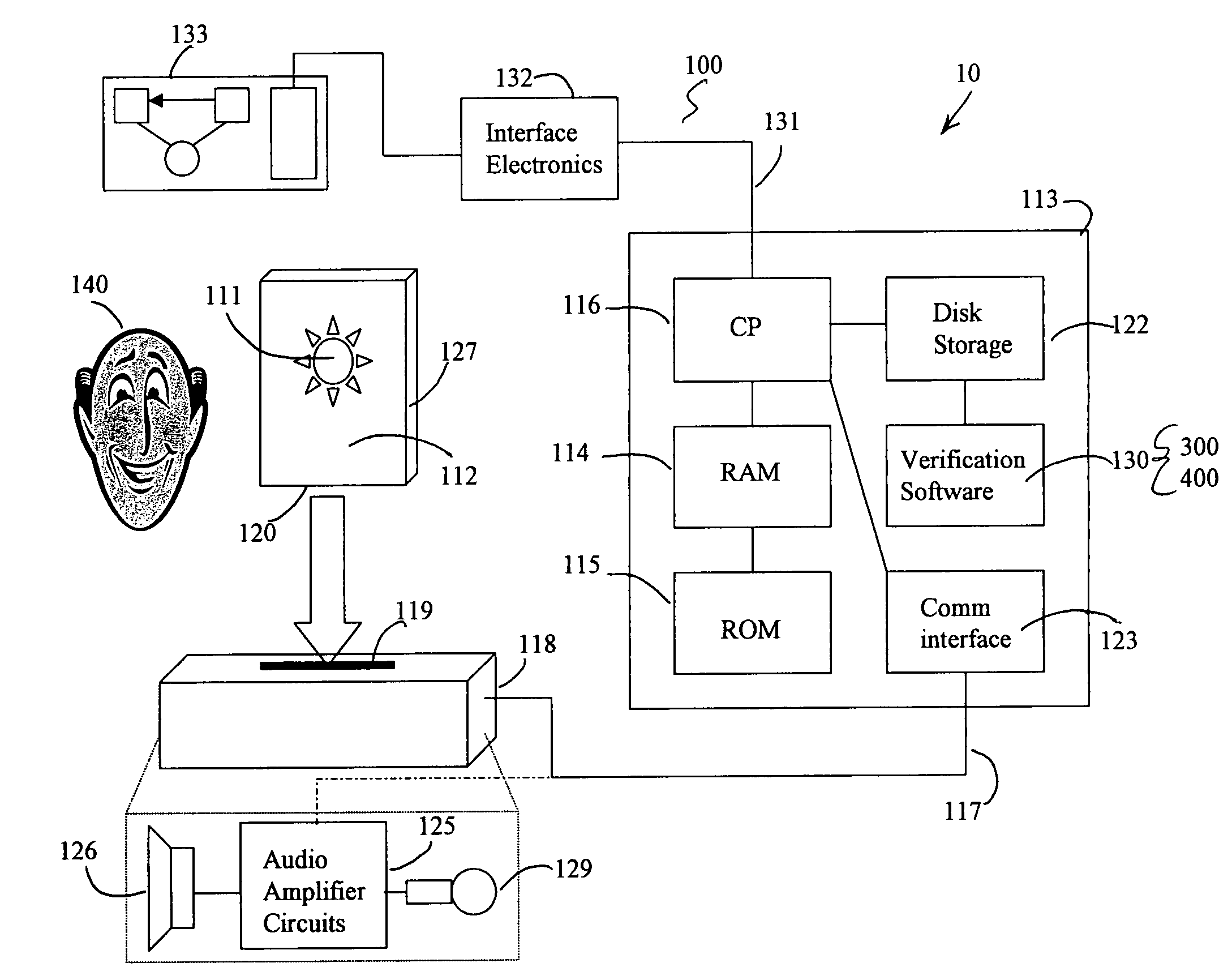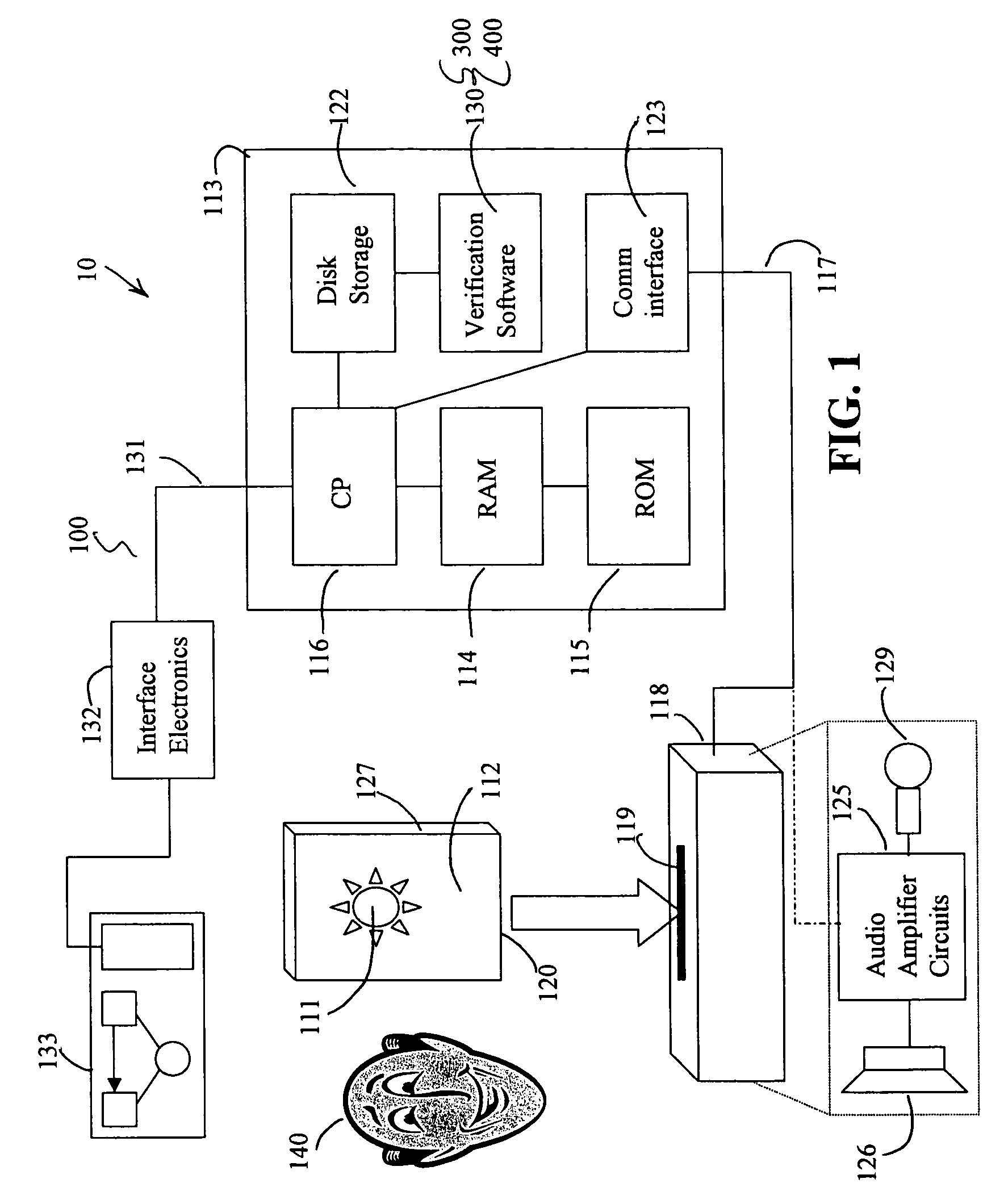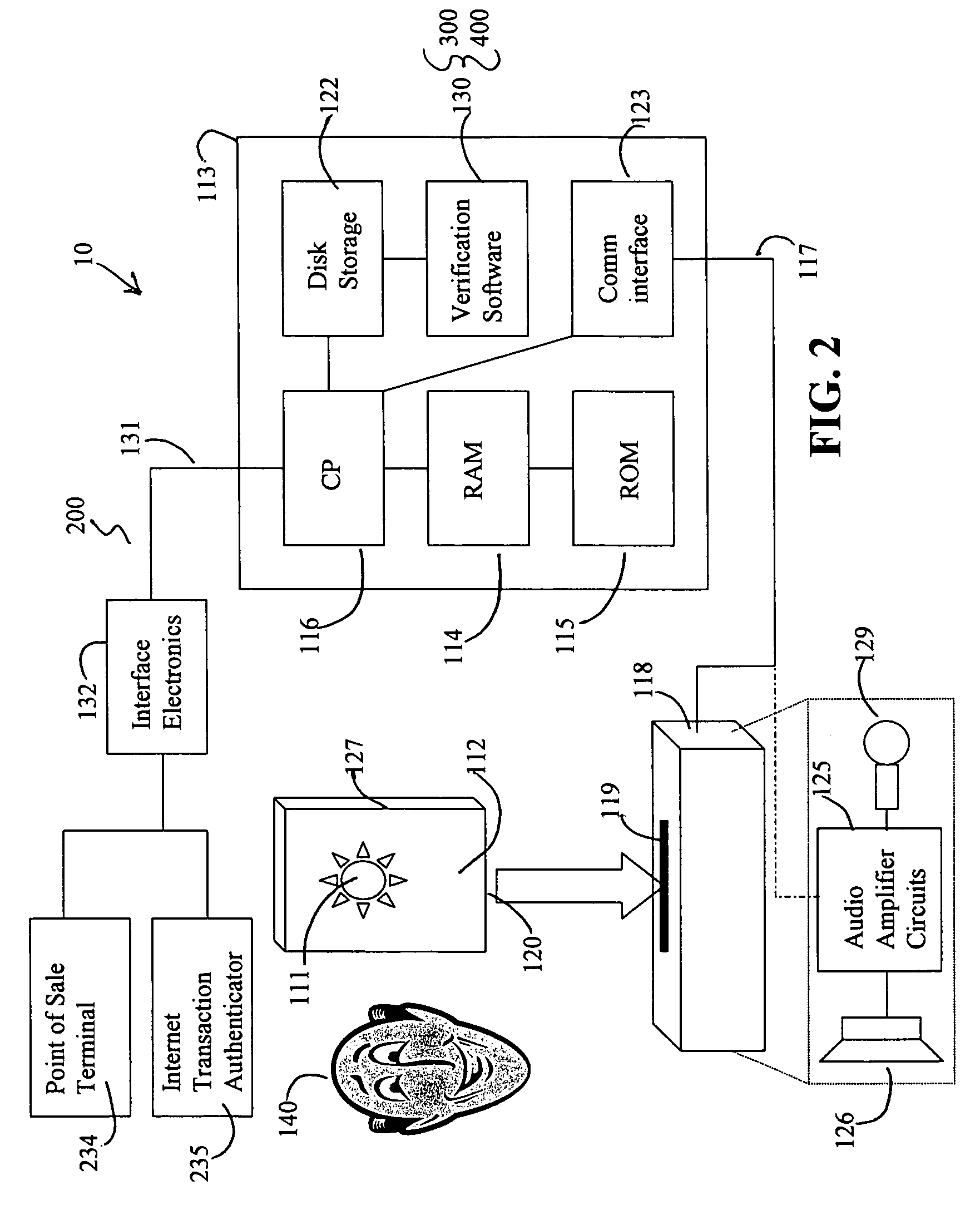Facial image verification utilizing smart-card with integrated video camera
a technology of facial image and video camera, which is applied in the field of facial image verification utilizing smart cards with integrated video cameras, can solve the problems of inability to protect the average citizen from the ever increasing incidence of criminal activity, the difficulty of securing facilities, and the inability of law enforcement officials to protect the average citizen from the ever increasing incidence of crime, etc., to achieve the effect of preventing fraud in point of sale and internet-based financial transactions
- Summary
- Abstract
- Description
- Claims
- Application Information
AI Technical Summary
Benefits of technology
Problems solved by technology
Method used
Image
Examples
Embodiment Construction
[0031]Referring to the drawings, an apparatus for a smart-card with embedded video camera capable of providing biometric verification of human users 140 of the present invention is generally referred to by the numeral 10. Referring to FIG. 1, an apparatus for preventing access to secure areas 100 of the present invention 10, includes a computer 113 having a central processor (CP) 116 which can be of a type that is well known in the art and commercially available under such trademarks as Intel® 486 or Pentium®, conventional non-volatile Random Access Memory (RAM) 114, conventional Read Only Memory (ROM) 115, and disk storage device 122. Computer 113 can be configured as a standard PC, or can be implemented as a custom single-board computer utilizing an embedded operating system such as is sold commercially under the trademark Windows NT®. Computer 113 is further operably associated with communications interface 123, communications cable 117 and smart-card docking station 118. Docking...
PUM
 Login to View More
Login to View More Abstract
Description
Claims
Application Information
 Login to View More
Login to View More - R&D
- Intellectual Property
- Life Sciences
- Materials
- Tech Scout
- Unparalleled Data Quality
- Higher Quality Content
- 60% Fewer Hallucinations
Browse by: Latest US Patents, China's latest patents, Technical Efficacy Thesaurus, Application Domain, Technology Topic, Popular Technical Reports.
© 2025 PatSnap. All rights reserved.Legal|Privacy policy|Modern Slavery Act Transparency Statement|Sitemap|About US| Contact US: help@patsnap.com



